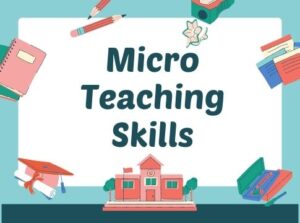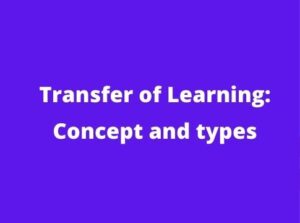Role of teachers in enhancing motivation: Motivation occupies a central place in the teaching-learning process. Every teacher, at one time or the other, is faced with the problem of motivating his students to learn. Therefore, it is essential to think of the ways and means for achieving motivation in the classroom situation.
Role of teachers in enhancing motivation
The following techniques that can be applied for enhancing learner’s motivation are-
- Child-centred approach: It is the child who has to learn. So that child should be judged according to their ability, interest, capacity and previous experience of the child. The learning materials and experiences should be assigned according to the needs, interests and abilities of the child.
- Linking the new learning to the past: The child is easily motivated to learn the new materials if he thinks that he knows all that which is required as a base for the new learning. So, it is the duty of the teacher to think his present teaching upon the previous experience acquired by the students.
- Use of effective methods, aids and devices in teaching: A new novel method helps in creating interest and motivation leading to the learner. The traditional method creates boredom and dislike towards the subject and kill the interest of the learner. So, the teacher should make use of suitable methods, devices, aids and materials in his teaching for effective motivation.
- Definiteness of the purpose and goals: Definiteness of the aims and goals makes the learner interested and sets him to work in a desirable direction. So it is the primary duty of the teacher to tell the students about the purpose of acquiring a new skill or experience. So that a clear perception of the goal may motivate them.
- Knowledge of result or progress: Knowledge of the result is found to be a strong incentive in learning and extremely effective ways of motivation. It provides sufficient feedback to the learner. So teachers should make provisions for acquainting the students well with their progress.
- Praise and blame Reproof: Both paise and reproof are potent incentives. They can be safely used for the achievement of desire motivation in classroom situations. Which one of these incentives will prove more effective depends upon the personality of the learner as well as of the person who gives them. In the case of some individuals, both praise and reproof work well while others respond best to one or the other. Generally, those having feelings of inadequacy respond more favourable to praise, and those who are self-assured, work harder after criticism. The ways in which these incentives are given or repeated by the teacher, also count much.
- Rewards and Punishment: Rewards and punishment bring the same result as praise and blame. Both of these are powerful incentives and try to influence the future conduct or learning of an organism favourably. While punishment as a negative motive is based on the fears of failure, losing prestige, insult on rejection, physical pain and so on; the reward as a positive motive seeks to influence conduct favourably by associating a pleasant feeling with the desired act.
- Competition and co-operation: Competition as a source of motivation is universally recognized. Nowadays we found too much competition in all walks of life. In the field of education, this spirit can be used as a powerful motivating force. The teacher can create a hearing situation where students engage in a healthy competition but should be very careful about the use of competition sometimes it give birth to bitter criticism, improper rivalry, enmity and conflict. So it is suggested to use co-operation as a remedial measure.
- Ego involvement: Every one of us wants to maintain status and self-respect. We like those people, objects and situations that make us feel important and dislike those that make us feel inferior. So, it is the duty of the teacher to motivate his students by appealing to ego maximization. He should engage them in activities that can appear to his self-respect.
- Development of proper attitude: Favourable attitude helps the learner in setting his mind and preparing him mentally for doing a particular task. Therefore, the teacher should try to develop a positive attitude of his students towards the desired action of learning.
- Appropriate learning situation and environment: The situation and the environment, in which the learning is to be made by the learner, influences the learning process. A well-equipped, healthy classroom environment proves a motivating force. The child likes to read, write or listen to the teacher carefully if he finds a favourable environment and appropriate learning situation. The suitability of the school building, the seating arrangement and other physical facilities available and affection he gets from his teachers, the mutual cooperation and helps he get from his classmates, the opportunity of participation in the school co-curricular activities etc all influence and motivate the learning behaviour of the child. Therefore effort should be made to provide suitable learning situations and an environment of effective learning.
References
Mangal, S., 2007. Essentials of Education Psychology. Prentice-Hall India Learning Private Limited.



